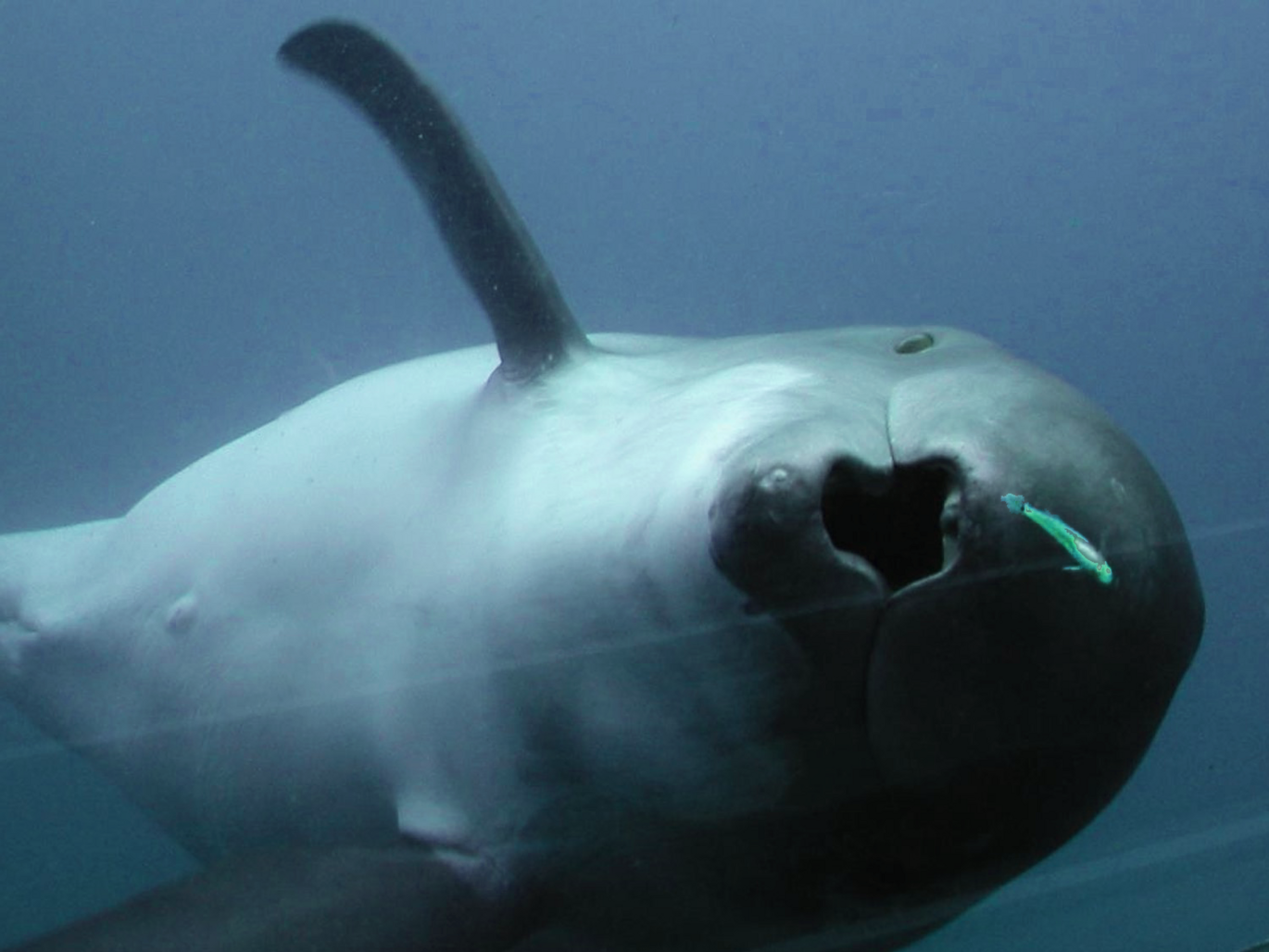Rapid echolocation helps toothed whales capture speedy prey
A new study by AIAS Fellow Mark Johnson and international collaborators shows that toothed whales rapidly adjust their echolocation behaviour to track fast and unpredictable prey movements, with response times similar to human vision.

Whales use a combination of rapid echolocation adjustments and nimble brain responses to zero in on fast-moving prey, suggests a study published today in the scientific journal eLife.
The findings show that the brains of echolocating whales respond at speeds comparable to visual predators as they target their prey. New insights on how these unique animals hunt may aid efforts to protect whales in the wild.
“Visual animals must respond quickly to sudden movements of their prey or predators,” said first author Heather Vance, Postgraduate Student at the Sea Mammal Research Unit, University of St Andrews, Scotland, UK. “For example, primates’ vision allows them to respond to sudden movements in as little as 50 milliseconds – less than the blink of an eye. But what about whales that use echolocation? We wanted to know if echolocators have a way to lock onto prey movements, like visual animals do, when they close in for the kill and how quickly they can react to prey movements.”
To answer these questions, the international team of researchers behind the new study attached sound and movement monitors with suction cups to six wild harbour porpoises, which hunt in shallow waters off Denmark, and eight Blainville’s beaked whales, deep-diving animals that live off the Canary Islands. They then analysed data on both the click sounds emitted by the whales and the echoes that help them track the movements of their prey.
Both types of whales rapidly adapted their clicking rate as they tracked their prey, emitting as many as 500 clicks per second while in hot pursuit. Whales responded to sudden changes in the position of their prey in as little as 50 to 200 millisenconds by adapting their clicking rate. The research team also found similar fast tracking behaviour in trained harbour porpoises following a moving target at the Fjord and Belt Center in Denmark.
“Despite the high clicking rates of the whales, their response speeds were similar to visual responses in monkeys and humans, suggesting that their brains may be wired for speed in much the same way as visual animals,” Vance explained.
“Quick responses may be critical for echolocating toothed whales to catch bigger and better prey in the dark seas,” added second author Peter T. Madsen, Department of Biology, Aarhus University, Denmark.
More knowledge about how echolocation works will help scientists better understand how echolocation has evolved, and how noise from ships and other human activities may interfere with the ability of whales to hunt. This insight could have potential implications for the animals’ survival.
“Many whale populations are shrinking, which has led to efforts to help protect them,” concluded senior author Mark Johnson, Associate Professor at the Aarhus Institute of Advanced Studies, Aarhus University, Denmark. “Knowing what conditions allow these animals to thrive will make conservation efforts all the more effective.”
Press release
Article above based on: https://elifesciences.org/for-the-press/e0df975b/rapid-echolocation-helps-toothed-whales-capture-speedy-prey
The scientific paper behind the study
The paper ‘Echolocating toothed whales use ultra-fast echo-kinetic responses to track evasive prey’ by Vance et al is published in eLife and is available online at: www.elifesciences.org/articles/68825
Funding
Mark Johnson has received support from The European Union’s Horizon 2020 under grant agreement no 754513 and Aarhus University's Research Foundation.
Contact
To arrange an interview with author Dr. Johnson at Aarhus University, Denmark, please email:
Mark Johnson, AIAS-COFUND Fellow, Associate Professor
Aarhus Institute of Advanced Studies &
Department of Biology – Zoophysiology
Aarhus University
Denmark
